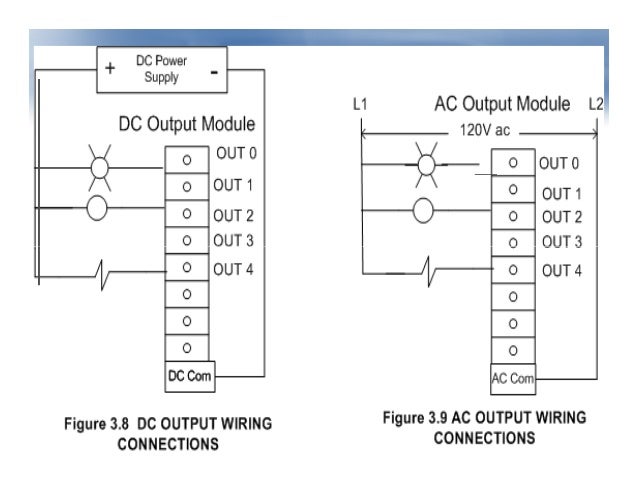Analog Input/Output Modules
Analog Input/Output Modules
Analog Input Modules

To select an analog input module the consider the followings:
*Voltage level.
*Current input.
*Conversion speed. There are two basic types of A/D converter. The first will perform a conversion every 20 ms (the period of the a.c. mains voltage), which gives a good clean reading free from worries of line frequency interference.
*Current input.
*Conversion speed. There are two basic types of A/D converter. The first will perform a conversion every 20 ms (the period of the a.c. mains voltage), which gives a good clean reading free from worries of line frequency interference.
The second will convert in 2-20 us, giving the possibility of measuring transient data.
*At very high rates the PLC may only have time to act as a data logger, storing the data as it is read, and analyzing it
some time after the event to report on or display it.
some time after the event to report on or display it.
Analog Output Modules

*The conversion speed of an analog output is generally <100 us and rarely a problem.
* Once the resolution of the module is selected we have only to consider the following points:
* Once the resolution of the module is selected we have only to consider the following points:
- Voltage level.
- Load resistance. Typically the minimum load resistance is 300 Ohm.
- Current output. It is often an advantage to use a current loop output (4-20 mA).
Analog closed loop control
In many cases analog inputs are used not only to monitor variables but also as a feedback to control a process by controlling relay outputs or varying an analog output. The required control accuracy must be defined in the specification, as must the maximum required rate of change.
Counters, encoders and positioning
In order to select the correct hardware consider:
*The speed;
*The total number of pulses to be counted;
*The positioning accuracy. There are many possible solutions available each of which offers a trade-off between speed of movement and positioning accuracy.
Comments
Post a Comment